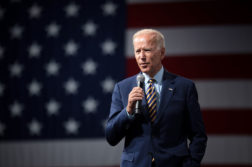Things have gone steadily from bad to worse in Pakistan as evidenced by a murderous rampage last Friday in a packed Lahore mosque that left 100 people dead. Until it grasps the full extent to which violence and chauvinism have penetrated mainstream Islam here, Pakistan can expect such violence to escalate.
Although the attack bore some similarities to many previous instances, the Lahore mosque massacre represents a dangerous new stage in the conflict gripping this troubled country.
It is not just that the massacre was the most murderous assault to have taken place in the modern history of this ancient city, the capital of the province of Punjab — although that too is a grizzly achievement.
What made this atrocity a particular watershed was its reflection of the changed landscape in Pakistan’s war against Islamist militancy. Where once the conflict was predominantly a Taliban insurgency focused on the tribal areas bordering Afghanistan in the northwest of the country, it has now morphed into a countrywide war where any individual or group within Pakistan society is a potential target.
This latest violence targeted a minority Muslim sect that is already persecuted by the state and society. The Ahmaddiya have been institutionally discriminated against by the state ever since Pakistan’s first democratically elected Prime Minister, Zulfiqar Ali Bhutto, bowed to Islamist pressure in the early 1970s and changed the constitution so that they would no longer be considered Muslim. Under his successor, the religious conservative military dictator Zia ul-Haq, persecution of the Ahmadiyya intensified with laws that made it a criminal offence for the Ahmadiyya to describe themselves as Muslims or to publicly perform rituals associated with Islam such as the call to prayer.
The Ahmadiyya have a long history of persecution stretching back to before the creation of Pakistan in 1947. Their only crime is believing their sacred prophet, a man named Ghulam Ahmadi who lived in the Punjab in the 19th century, was the last of Allah’s messengers on earth, not the Prophet Mohammad or Ali, as believed by the overwhelming majority of Sunni and Shia Muslims respectively.
Pakistani television refused to describe the bloodied crime scene as a mosque opting instead for "place of worship", a chilling reminder that this country of 170 million people is still a long way from developing the religious tolerance promised by its founding father, Mohammad Ali Jinnah. Even so, religious political parties have tended to poll poorly in all elections contested on an equal footing against secular parties.
Paradoxically, the violence has escalated at the very time that Pakistan and US military operations look to be defeating the Pakistan Taliban insurgency. It is fair to say the militants have been significantly weakened thanks to Pakistan military operations against their sanctuaries along the northwest border with Afghanistan, and to a massive increase in US drone strikes that have killed much of their key leadership.
Under these conditions, it is difficult to understand why the violence has increased and not abated, but there are two clear signals.
Firstly, as the militants lose more and more territory to Pakistan’s security forces, their interest in high profile violence increases. Terrorising the population at large helps magnify their perceived power. Moreover, the loss of key leaders like Baitullah Mehsud to US drones has pushed the insurgency closer to al Qaeda, and to a raft of more radical sectarian militant groups. The aims and motives of these organisations are broader than that originally envisaged by the Pakistan Taliban, namely the creation of a rigidly orthodox Islamic state inside Pakistan. As the Mumbai attacks of 2008 demonstrated, the new breed of militant views this as an international conflict with no fixed frontline.
A second, pivotal reason for the continued violence is the state’s continued inability to rein in militants based in the Punjab. Unless and until the intolerance at the heart of mainstream Islam in Pakistan is challenged, no amount of military victories or extrajudicial executions will end the insurgency. The federal government looks to be trying to make amends for that omission with its loudest acknowledgement yet that there is a militant threat emanating from more settled regions of Pakistan like the Punjab.
But the great challenge for Pakistan remains continued and consistent political leadership in the face of widespread denial as to the local origins of much of the terrorism that has paralysed the country.
At the same time as federal Interior Minister Rehman Malik was acknowledging the threat from the Punjab, for instance, the province’s Chief Minister Shabaz Sharif categorically denied that such a threat existed.
The denials are wearing thin. The Punjab has been a rich source of Islamist militancy since at least the anti-Soviet war in Afghanistan during the 1980s, and it is here that support within Pakistan for the covert war against Indian forces in Kashmir is strongest. The Punjab shares strong cultural links with Kashmir and several prominent politicians, including Rana Sanaullah from Sharif’s Pakistan Muslim League Nawaz party, have been associated with wanted jihadist leaders, particularly from the outlawed anti-Shia Sipa-e-Sahaba militant group. In March Sharif released two Sipa leaders from prison in an apparent attempt to gain the militant group’s support in an upcoming by-election.
This all reflects a broader problem. Once contained in the remote tribal areas of Pakistan’s ethnic Pashtun population and the Pakistan Taliban, the conflict and a range of new militant outfits has proliferated throughout the country and particularly in the Punjab. The insurgency has increasingly gone beyond merely overthrowing the state to sectarian differences that risk a divisive war along ethnic and confessional lines. In the past most attacks were against symbols of the Pakistan government such as police and army bases and foreign missions. Although Pakistan has an unfortunate history of sectarian attacks, none have matched the savagery of recent blasts and shootings targeting private citizens and their religious affiliations.
Yet while Pakistan’s government has eagerly enforced a court order banning Facebook and other internet sites over insulting images of Prophet Muhammad, there have been few concerted attempts to challenge rigid conceptions of the national religion. In the absence of such a challenge, however, intolerance will continue to prove as deadly as it did in Lahore last week.
Donate To New Matilda
New Matilda is a small, independent media outlet. We survive through reader contributions, and never losing a lawsuit. If you got something from this article, giving something back helps us to continue speaking truth to power. Every little bit counts.



